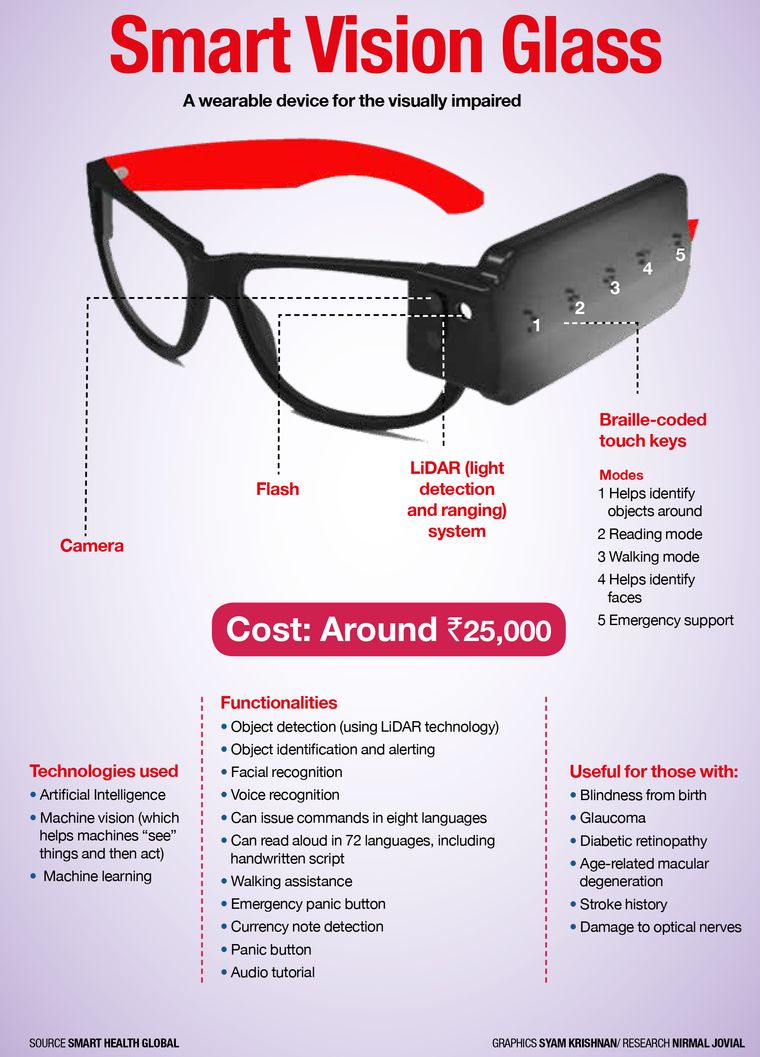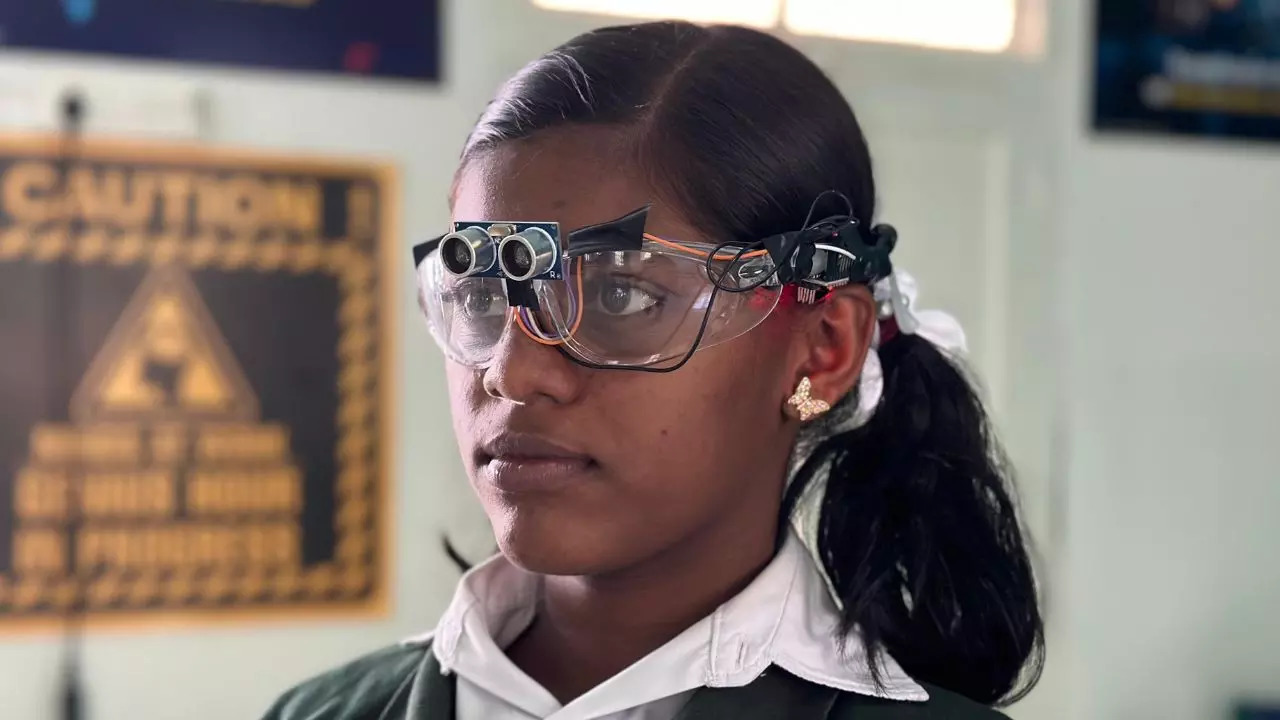OCR Devices for the Blind: Breaking Barriers with Optical Character Recognition
OCR Devices for the Blind: Breaking Barriers with Optical Character Recognition
Blog Article
Innovative Solutions in Assistive Technology for Visual Disability
The landscape of assistive modern technology for visual impairment is progressing swiftly, offering a range of innovative options that improve accessibility and independence. From sophisticated mobile phone applications that promote navigation to wearable devices developed for real-time support, these devices are improving the experiences of those with aesthetic problems.
Innovations in Smart Device Applications
In recent times, developments in mobile phone applications have actually dramatically changed the landscape of assistive modern technology for people with aesthetic problems. These applications utilize the effective sensing units and capacities of modern-day smart devices to give customers with devices that boost freedom and availability in their day-to-days live.
Significant among these developments are applications developed for object acknowledgment, which make use of the smart device's cam to determine items and provide spoken summaries. Such functions empower users to browse their atmospheres much more effectively, whether recognizing items in stores or situating individual possessions at home. In addition, text-to-speech applications have improved significantly, enabling customers to catch printed message with their tool's electronic camera and get instant audio feedback, consequently helping with analysis and comprehension.
Community-driven applications have promoted social communication and source sharing amongst individuals with visual impairments, producing an encouraging network that enhances their high quality of life. Generally, smart device applications have actually come to be essential allies in promoting freedom and accessibility for individuals with visual disabilities.
Wearable Tools for Navigating
Wearable tools for navigating have actually arised as a groundbreaking solution for individuals with aesthetic problems, supplying hands-free assistance that improves wheelchair and positioning. These gadgets normally make use of innovative modern technologies, including GPS, ultrasonic sensing units, and fabricated knowledge, to offer real-time comments and instructions to users as they browse their setting.
One remarkable instance of wearable navigation modern technology is wise glasses, which can spot barriers and relay auditory or haptic comments to the wearer, permitting for effective and safe motion in various setups. Other tools, such as vests and belts outfitted with sensors, can in a similar way notify customers of their surroundings by giving informs about close-by objects or modifications in surface.
Furthermore, many wearable gadgets incorporate with smartphone applications, making it possible for users to tailor their navigation preferences and obtain tailored path recommendations. This customization can significantly improve the customer experience, equipping people to travel with higher self-confidence and independence.
As innovation continues to establish, the possibility for wearable navigation gadgets to improve the high quality of life for individuals with aesthetic impairments stays significant, leading the way for more comprehensive and obtainable atmospheres.
Smart Home Modern Technology Integration

Furthermore, smart devices outfitted with responsive interfaces or acoustic responses supply user-friendly interactions that provide particularly to the needs of those with aesthetic disabilities. Smart fridges can announce their materials and expiration days, while wise ovens can assist users via the cooking procedure with audio directions.
Home automation systems, such as smart buzzers and safety and security cameras, use assurance by permitting users to obtain notifies and accessibility live feeds through their mobile phones, improving individual safety (AI-powered visual aids). In addition, integration with smart devices and tablets guarantees that customers can manage their home atmosphere from anywhere within their properties
As smart home modern technology remains to develop, it holds the possible to transform the living experiences of individuals with aesthetic problems, fostering self-reliance and boosting lifestyle in a progressively linked world.

Educational Devices and Resources
Access to effective educational tools and sources is essential for individuals with visual impairments, as it encourages them to involve totally in their understanding experiences. Numerous assistive modern technologies have actually been established to improve ease of access and foster independent knowing.
Furthermore, educational software specifically made for aesthetically damaged individuals provides features such as high-contrast settings and adjustable text sizes. These devices fit diverse learning designs and make certain that trainees can tailor their find more information instructional experience to their demands.
Moreover, access to electronic collections and audio books increases the array of offered learning products, allowing students to discover subjects extensive without the restrictions imposed by typical print resources. Collaborative systems that incorporate access functions also promote group projects, making sure that visually damaged students can add meaningfully alongside their peers.
Area Support and Interaction
A robust network of neighborhood assistance and interaction is essential for people with aesthetic disabilities, cultivating an inclusive setting where they can flourish. Area organizations, regional campaigning for groups, and volunteers play an essential role in giving resources, info, and friendship, which are important for boosting the quality of life for those impacted by aesthetic problems.
Involvement tasks such as workshops, get-togethers, and assistance groups not only help with ability advancement Clicking Here yet additionally promote social interaction, decreasing sensations of seclusion. These initiatives encourage individuals to share successes, obstacles, and experiences, consequently enhancing community bonds. In addition, partnerships with neighborhood organizations can cause higher availability in public spaces, further integrating people with visual impairments right into the community.
Innovation likewise improves area engagement via on the internet platforms that offer digital support teams and sources, allowing individuals to connect no matter geographical barriers. By using both in-person and electronic services, communities can produce an extensive assistance network. Ultimately, cultivating collaboration among different stakeholders-- including family members, educators, and health care experts-- makes sure that individuals with aesthetic disabilities obtain the holistic support necessary to navigate day-to-day live effectively and with self-respect.
Final Thought
Innovative services in assistive innovation for visual impairment considerably enhance the lifestyle for individuals dealing with these obstacles. The assimilation of smartphone applications, wearable devices, wise home modern technology, and academic devices fosters better self-reliance and availability. Neighborhood assistance and interaction additional empower aesthetically damaged people, promoting inclusivity and involvement in different elements of life. Collectively, these improvements not only change daily experiences yet likewise lead the method for an extra fair society.
The landscape of assistive technology for aesthetic disability is advancing rapidly, offering an array of ingenious remedies that enhance ease of access and independence. Community-driven applications have actually fostered social interaction and resource sharing among individuals with aesthetic impairments, creating a supportive network that improves their quality of life. On the whole, smart device applications have ended up being important allies in advertising freedom and access for people with aesthetic problems.
Lots of people with visual impairments are finding greater autonomy with the assimilation of smart home technology.Ingenious remedies in assistive innovation for aesthetic disability substantially boost the quality of life for individuals facing these challenges.
Report this page